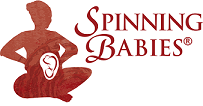Another surge of gratitude for not having gone through the system.
Read this insightful report of this test for an “OB” class.
https://myhousesmellslikevanilla.blogspot.com/2009/12/reflections-on-exam-of-doom.html
The blogger, I can’t see her name, compares a care plan for a woman who has a breech baby at the end of pregnancy.
Of course, I’ve met many dozens of wonderful hospital care providers. And many that would like to trust breech, and a few that actually do. But usually, I notice that if I speak with a hospital provider about breech in such a way that reveals my trust in breech birth I am met with an incredulous and even offended look. The message I get is that if I don’t fear breech birth then I must not know much about it; that somehow I’m irresponsible to trust birth.
This is a trained response that tightens the hospital community into a shared culture of fear. An “appropriate” level of fear is bonding. Shared meanings create shared perspectives and allows one to be part of the group. Doulas, childbirth educators, and parents can fall into this response to breech birth, not from education or information, but to feel connection with the nurses, midwives and doctors. Not just fear, but a shared “awe.” By adapting the same emotional response in the manner of the person with more authority or power – the person with less power seems to rise in status and get brought more securely into the group.
The radical birth trusters are those that stand a bit apart. Sometimes they can win the respect of the hospital staff when relationship and repeated results are favorable and their communication style is winning. This is the case for the calm and calming obstetrician who continues to attend breech babies in spite of ACOG and the fear culture within obstetrics and maternity care.
Homebirth midwives trust breech birth in more numbers, but not universally. In this group education is more likely to expand trust, especially when the content reflects birth physiology and the natural progression of breech through spontaneous cardinal movements when the mother is leaning forward. Midwifery traditions have safe breech practices, but not all midwives know the traditions and techniques.
Carol Phillips, DC tells how the forward leaning position shifts uterine ligaments in a favorable way for spontaneous birth.
We can trust birth when we know how to support spontaneous birth. Often, this is to do nothing. Providers can learn quickly to distrust birth when they see, time after time, difficult outcomes. They may never link how the outcomes follow a course of prenatal care without relationship, nutrutional counseling, community support and connection, and other ways of helping a healthy woman stay healthy throughout pregnancy. They may never link how bad outcomes follow multiple interventions, including multiple doses of various drugs. They may never link any of this because they don’t have the opportunity to see the woman’s life before and after the birth to gain understanding of lifestyle influences on birth, or medical intervention influences on breastfeeding and newborn alertness.
Well, that’s my soap box for the evening. Stay warm!
